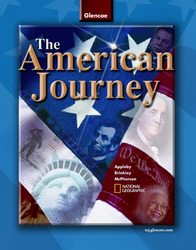
The American Journey © 2007Chapter 28: America in the 1950sChapter OverviewsDissatisfaction with President Truman and the stalemate in Korea swept Dwight Eisenhower to victory in 1952. The following years saw a rise in prosperity for many Americans. Eisenhower believed that government should protect the basic welfare of Americans. During the 1950s the nation's population grew, in part because of the baby boom. The suburbs became convenient places to live as more and more Americans had cars. A federal highway system made travel even easier. Television became a main source of entertainment. During this time of prosperity, however, more than 20 percent of Americans lived in poverty. Small farmers and other rural dwellers especially suffered. As middle class Americans moved out to the suburbs, urban areas declined. Many criticized America's focus on materialism. The Cold War also affected events in the 1950s. The Soviets were the first to successfully launch an artificial satellite—Sputnik—into space. Many feared that the U.S. was falling behind. Defense spending increased and the nuclear arms race continued. In 1958 the United States launched its first successful satellite. Project Mercury, the nation's first program to put an astronaut in space, quickly followed. |  |















